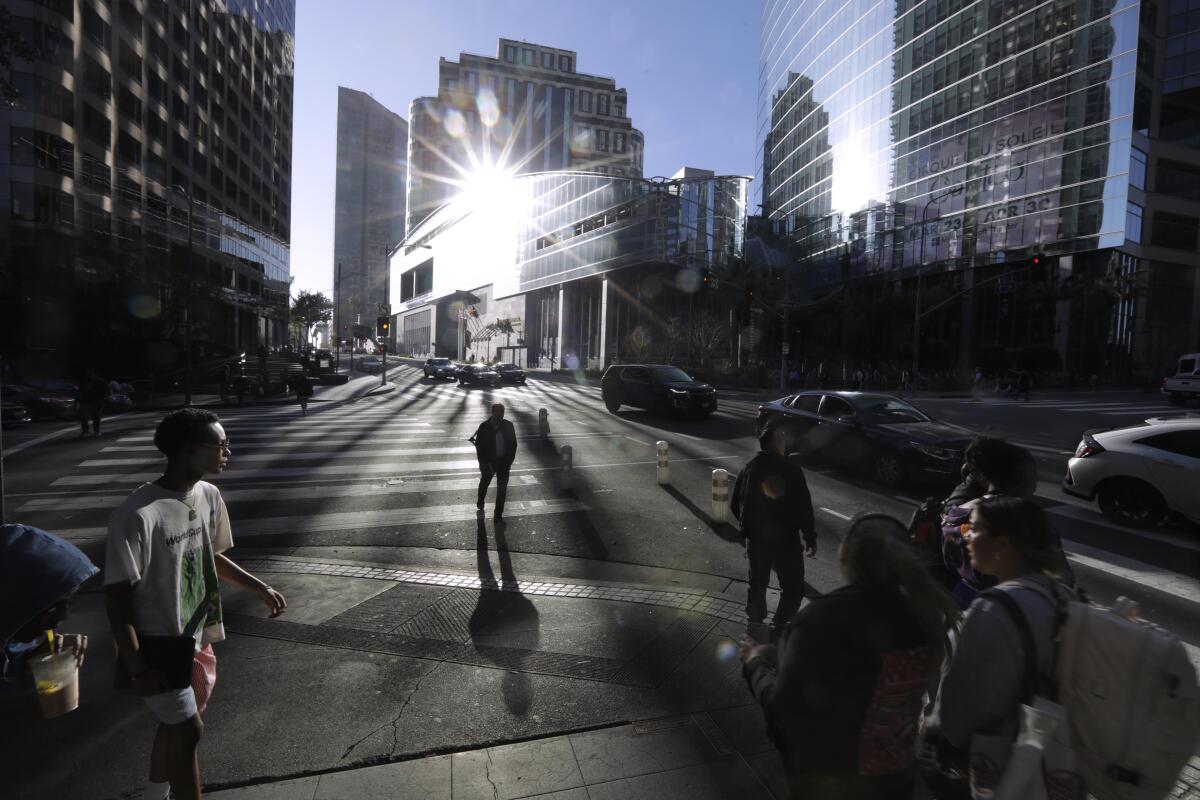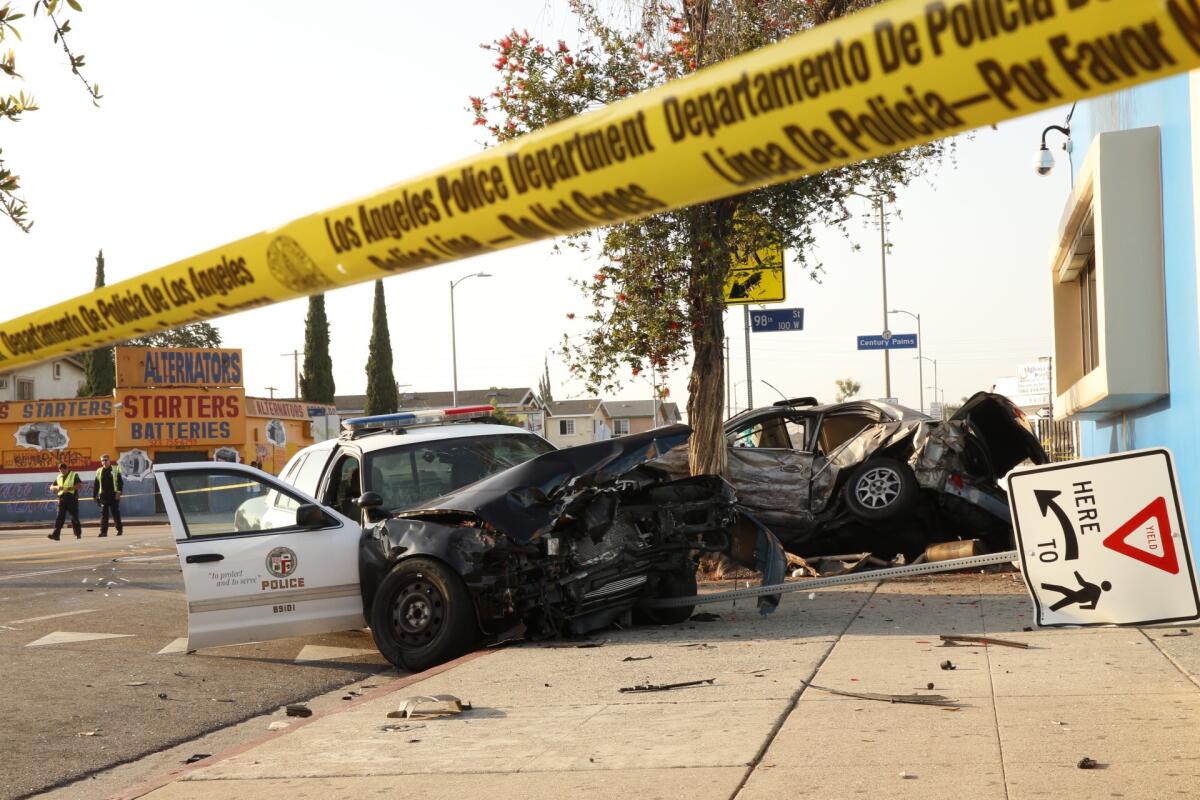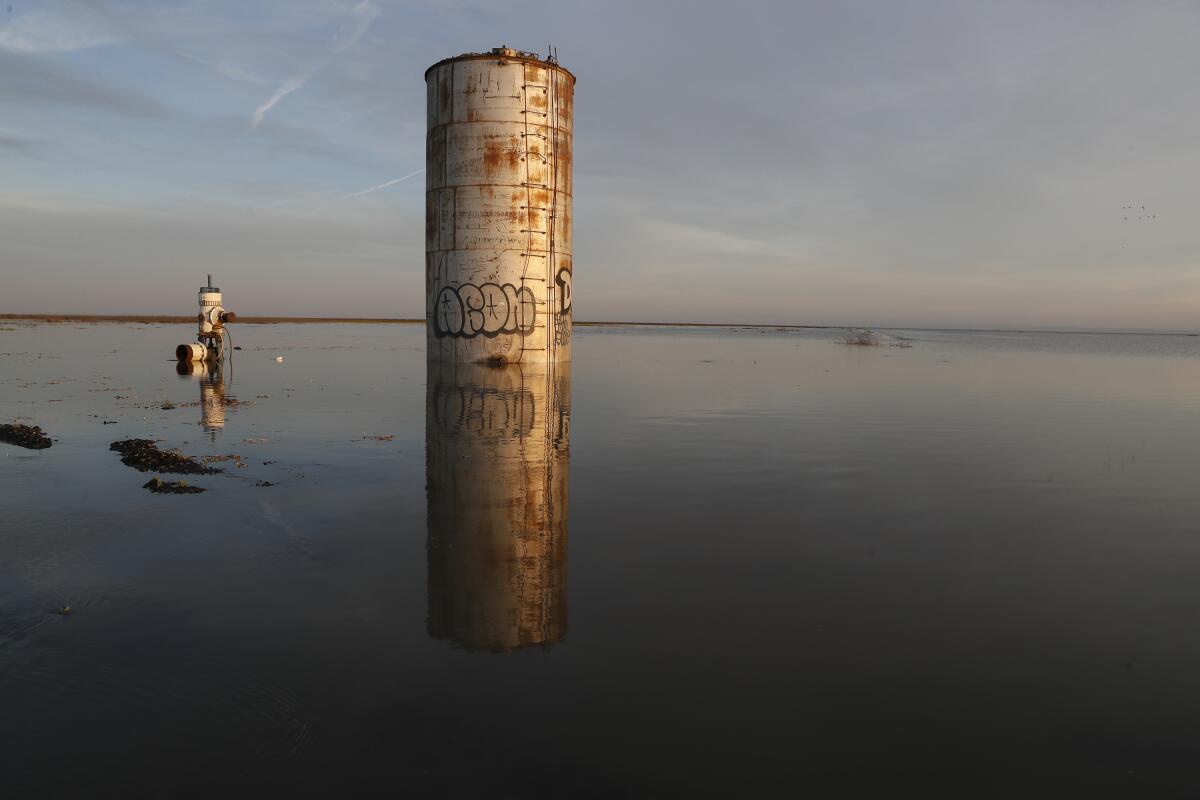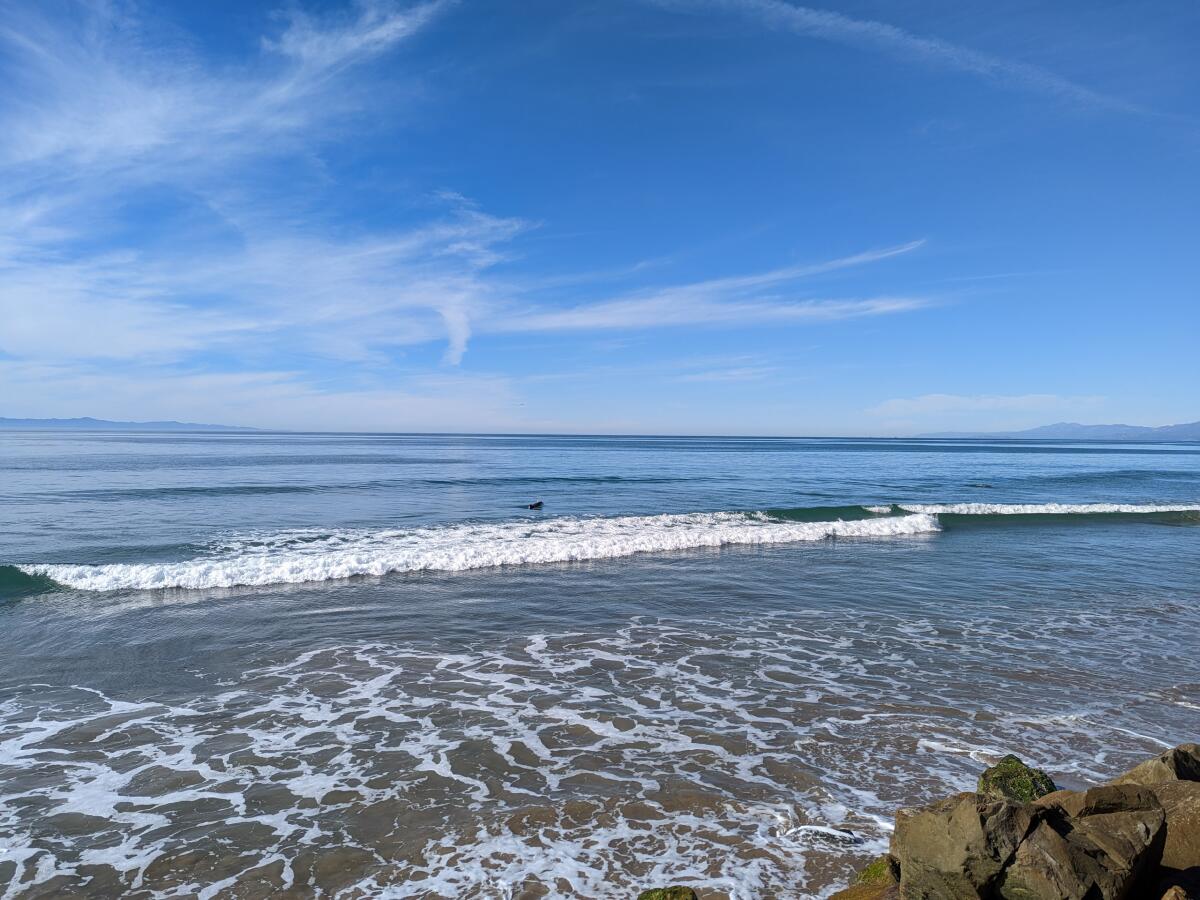You can always go downtown. But in some California cities, many still don’t

- Share via
Good morning, and welcome to the Essential California newsletter. It’s Thursday, April 27.
Petula Clark must be so disappointed. In many cities, everything’s waiting for you, but fewer people are going downtown. Three-plus years after the pandemic and emergency orders emptied out bustling city centers, the bustle has not yet returned for some.
In California, urban cores’ recovery has been uneven, according to a study by the School of Cities at the University of Toronto. Researchers recorded foot traffic based on cellphone data in 62 North American cities from 2019 through November 2022.
“Each of California’s largest downtowns has rebounded differently,” Times reporter Alexandra E. Petri wrote this week.
For instance, the data from San Diego showed downtown foot traffic nearly 100% restored, while San Francisco remained largely empty, with just 31% of its 2019 people volume. Alexandra explained one reason for that divide:
San Diego was more reliant on tourism and residential development, which helped its recovery. San Francisco, on the other hand, was far more dependent on office workers and has suffered from companies shifting to remote work.
In San Francisco, ranked dead last in the study’s list, leaders are working to turn the tide and prevent millions in tax revenue from disappearing. The situation there has many experts worried about a “doom loop” scenario, in which the connected cascade of low foot traffic, shuttered businesses and lost tax revenue spirals into city budget shortfalls, service cuts and mass public sector layoffs.
“It’s not just remote work that’s hamstringing recovery,” Alexandra wrote. “Public safety is a top concern, though data indicate violent crime has fallen over the last decade and is below that of cities of similar size.”
Two midsize cities in Central California not only returned to pre-pandemic downtown foot traffic — but also saw their popularity grow.
Bakersfield and Fresno posted downtown recovery rates of 125% and 121%, respectively.
One possible explanation for the growth in those and other midsize cities, according to researchers: “the influx of new population” seen in several Central California counties.
A few other cities experiencing slower returns are Oakland, at 46%; Los Angeles at 65%; and San Jose at 68%.
A big part of the lag in L.A. is office occupancy rates 47% lower than pre-pandemic levels, Alexandra reports.
“Many storefronts remain shuttered,” she wrote, “and residents, employees and business owners point to the growing homelessness emergency that they say has gotten worse.”
So where do struggling cities go from here?
The University of Toronto report states: “To survive in the new era of remote work, downtowns will need to diversify their economic activity and land uses.”
In other words, city leaders should reimagine their urban cores as places with less corporate office space and more community space for people to live, dine and recreate.
Politico previously outlined a few tactics cities across the U.S. were exploring to get there, including:
- Creating more outdoor spaces
- Reclaiming space occupied by parked cars for people
- Converting office buildings to housing
- Improving transit connections and other car-free mobility options
- Investing in arts and culture as staples of downtown
You can read more of Alexandra’s reporting here.
And now, here’s what’s happening across California:
Note: Some of the sites we link to may limit the number of stories you can access without subscribing.
L.A. STORIES
Speaking of downtown, Times writer Jeffrey Fleishman reflected on a decade of life in DTLA, watching the “ragged splendor” change around him. “Life downtown is navigating the dystopian and the make-believe, the frivolous and the consequential,” he wrote. Los Angeles Times
City data reveal nearly half of the people injured in L.A. police pursuits are bystanders. LAPD officers have been involved in more than 4,200 car chases since 2018, leading to crashes that injured nearly 500 and killed nine people who weren’t involved in the chase. Los Angeles Times

CRIME, COURTS AND POLICING
Santa Monica police ignored warnings that a civilian employee with the department was a sexual predator, with more than 200 people eventually coming forward to say they were molested. After the most recent lawsuit settlements, the total payout stands at $229.285 million — the costliest single-perpetrator sexual abuse disbursement for any municipality in California. Los Angeles Times
A former campus gynecologist at UCLA has been sentenced to 11 years in state prison for sexually abusing his patients. James Heaps was convicted in October on five of 21 felony charges. The UC system has agreed to pay nearly $700 million to settle lawsuits brought by hundreds of his alleged victims. Los Angeles Times
A convicted kidnapper and rapist was set to move into a Santa Cruz County community. But his would-be neighbors created a home school to keep him out. The Mercury News
A family alleges that L.A. County sheriff’s deputies entered their home without permission or a warrant and detained two teens who argued with them. Home camera footage posted on TikTok shows deputies knocking on the door of the San Gabriel apartment before entering the home and later putting a teen girl in handcuffs. Sheriff’s officials say the front door was ajar, but the family’s attorney says that’s a lie. Los Angeles Times
Support our journalism
HEALTH AND THE ENVIRONMENT
The big melt is bad news for campers in the Yosemite Valley. Officials say campsites there will close on Friday as they brace for hazardous flooding from melting Sierra Nevada snow. Los Angeles Times
After California’s epic winter storms, Tulare Lake Bed is back to being Tulare Lake. Water experts say the restored body of water could take two years to drain. But some are pushing to make the lake permanent. San Francisco Chronicle

Irvine is slated to open what will likely be the first 100% electric medical center in the U.S. The UCI Medical Center Irvine-Newport will run on solar and electric power and is expected to be fully operational by 2025. Los Angeles Times
Bear sightings have surged in the San Gabriel Mountains foothill city of Sierra Madre. That prompted city leaders to declare the bears a public safety threat, alleging mismanagement of the population by the California Department of Fish and Wildlife. San Gabriel Valley Tribune
CALIFORNIA CULTURE
One of the nation’s first Asian American bookstores is about to shutter after more than 40 years in Berkeley. The owners of Eastwind Books say higher rents and maintenance bills prompted the closure. KQED
The intricate freeway pillar murals along San Diego’s Chicano Park tell a story of Chicano resilience. Now a younger generation is stepping up to keep that message moving. KPBS
The two-weekend Coachella festival is over, but now Stagecoach is rolling into the desert town of Indio. Here’s what to expect at this weekend’s country music celebration. The Desert Sun
Free online games
Get our free daily crossword puzzle, sudoku, word search and arcade games in our new game center at latimes.com/games.
AND FINALLY
Today’s California landmark is from Lisa Mirisola of Ventura: Emma Wood State Beach.

Lisa writes:
Emma Wood State Beach is an excellent example of the gems in our state parks system. [It’s] a special beach filled with life — including pelicans and dolphins surfing, accessible from the coastal bike path and campground.
What are California’s essential landmarks? Fill out this form to send us your photos of a special spot in California — natural or human-made. Tell us why it’s interesting and what makes it a symbol of life in the Golden State. Please be sure to include only photos taken directly by you. Your submission could be featured in a future edition of the newsletter.
Please let us know what we can do to make this newsletter more useful to you. Send comments to essentialcalifornia@latimes.com.
Sign up for Essential California
The most important California stories and recommendations in your inbox every morning.
You may occasionally receive promotional content from the Los Angeles Times.







